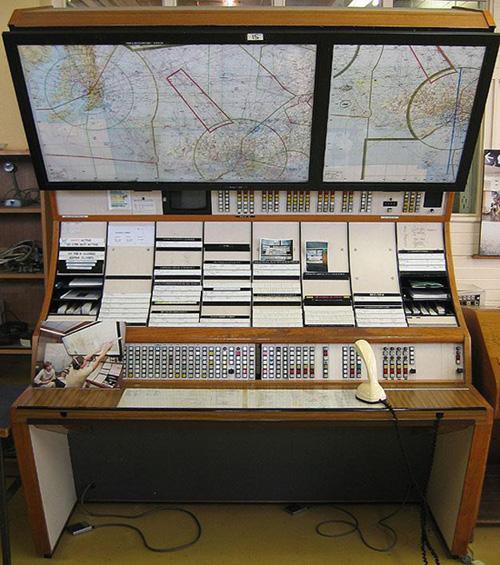
Typical of the final generation of Flight Service consoles used in the major capital
city Flight Service Centres, this was the console for the Melbourne Flight
Information Service 15 (ML FIS 15) position (always pronounced "Fiz 15").
This type of console was in use throughout the 1990s.
FIS 15 was responsible providing flight and traffic information Outside Controlled Airspace (OCTA) within the area between Melbourne and Adelaide.
Of particular interest is the strip display. The consolidation of outstation units into the major Centres meant that operators were working larger and more complex airspaces. The need to improve traffic conflict recognition led to the adoption of an ATC-like geographical display of flight progress strips.
The Flight Progress Board was divided into a number of vertical 'bays', with each bay subdivided by horizontal 'bay dividers', each representing a particular geographical point within the area of responsibility. The strip for each aircraft would be placed under the bay divider representing the area in which the aircraft was currently operating.
Along the bottom face of the console are intercom buttons and, to the right, controls for the HF radio network. The panel above the strip bays holds the controls for the VHF radio outlets.
On the desktop is an Ericophon - a most ergonomic handset for intercom and radio. During the day this would normally be stowed in a drawer at the right-hand end of the desktop and a headset would be used instead. On the floor can be seen two foot Press-To-Talk (PTT) switches which, with a headset, enabled the operator to communicate hands-free.
Flight Service disappeared as a separate organisation when its functions were taken over by Air Traffic Control (now Air Traffic Services) in 2000 using the new TAAATS equipment. All the former FS functions were consolidated into two major Centres in Melbourne and Brisbane.
(Photo: CAHS collection)